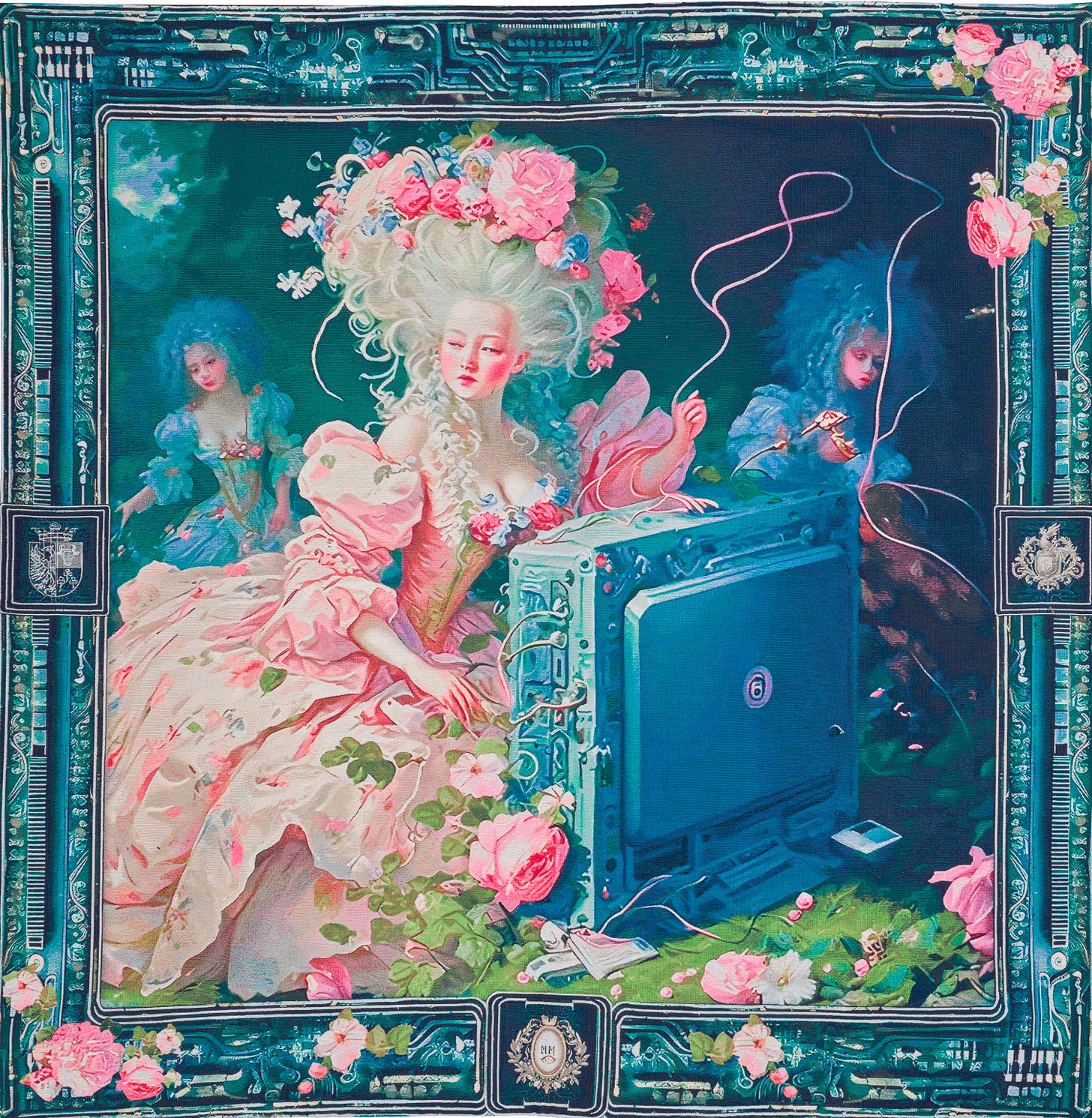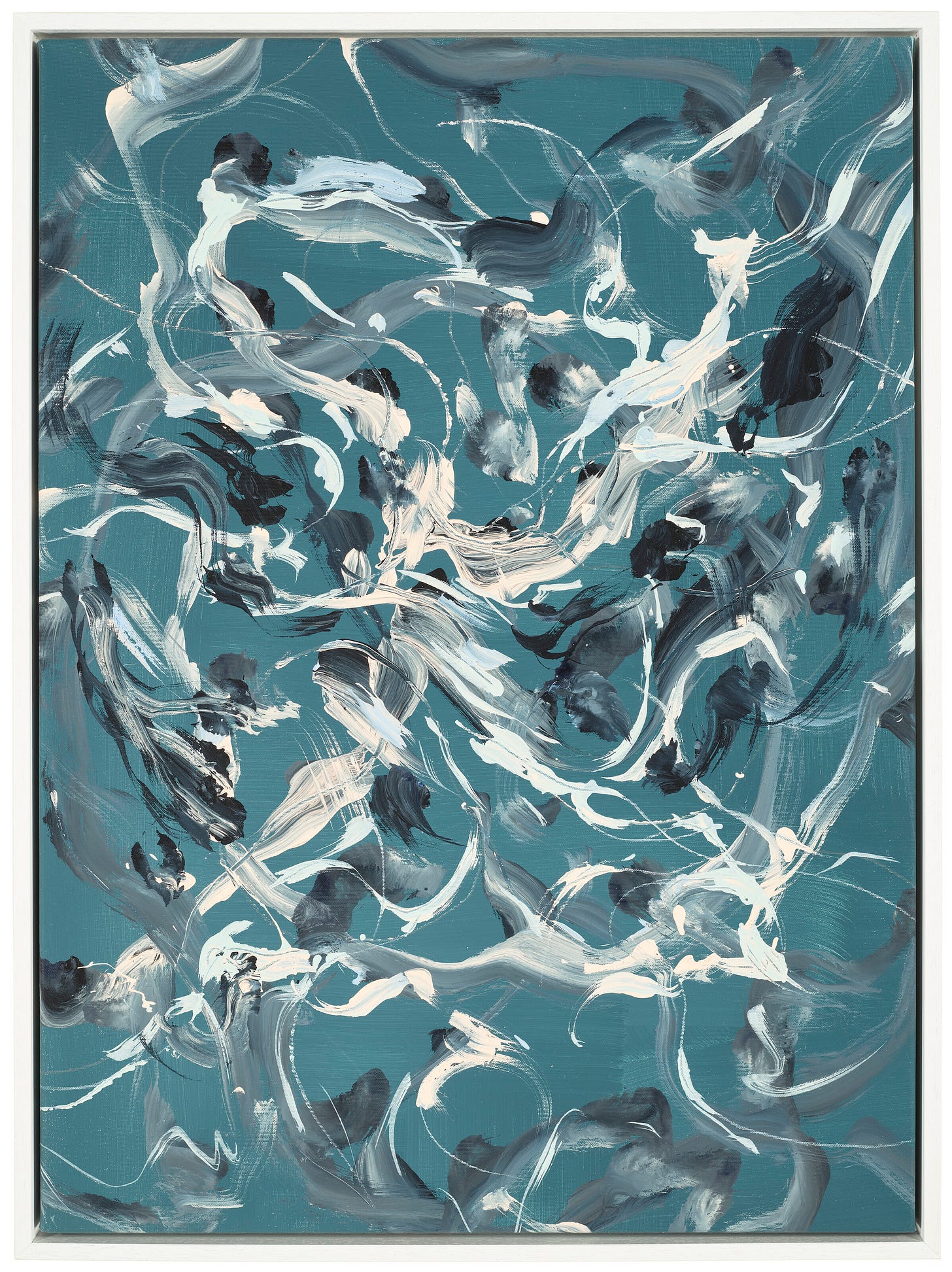AI's Art Market Test, The Results Are In
Thoughts on what the successes (and failures) of Christie’s Augmented Intelligence sale mean for Canada.
Bringing in over $700,000, the sales results from Christie’s first all-AI auction, Augmented Intelligence, exceeded expectations.
Refik Anadol, Holly Herndon and Mat Dryhurst, and Claire Silver had sales well above the high estimates set by the auction house. Notably, Anadol’s Machine Hallucinations – ISS Dreams – A achieved $277,200, far surpassing its $200,000 high estimate. Herndon and Dryhurst’s Embedding Study 1 & 2, which were featured in the 2024 Whitney Biennial before appearing at Christie’s, sold for $94,500, again surpassing the high estimate.
Beyond the numbers, the sale reaffirmed key themes I discussed in my initial reflection on Augmented Intelligence: the intersection of human creativity and AI, the market’s role in legitimizing AI-generated art, and the ongoing ethical and legal debates surrounding its production. The controversy stemmed from an open letter, signed by 6,506 individuals at the time of publication, protesting the use of generative AI models trained on copyrighted material without consent. This underscores the ongoing legal and ethical challenges surrounding AI-generated art.
While Christie’s defended the artists in the sale—emphasizing that AI is a tool rather than a substitute for human creativity—the debate over authorship and fair compensation remains pressing. However, I see the issue as even more existential, shaping the future directions of art-making itself. My response to the call for cancellation as I wrote it last month was that,
Canceling the sale would unnecessarily punish the artists whose work is included instead of rewarding them for their creative and intellectual investigations of human-AI relationships in art making practices.
I see echoes of past disruptions in image-making—from photography’s early days to the rise of appropriation art. The art market tends to react cautiously to these shifts, often prompting legal changes before eventually settling into new norms. AI art’s trajectory is likely to follow a similar pattern: initial resistance, legal battles, and eventual integration into the broader art world. What might be the most defining factor in that trajectory was strong participation of Millennial and Gen Z collectors—nearly half of all bidders—indicating that AI art is finding a receptive audience among younger buyers, potentially shaping the future trajectory of this market.
But, the show wasn’t a total success. I think looking at what didn’t sell and what failed to meet its low estimate is just as revealing.
While 28 of the 34 lots sold, some works failed to find buyers, signaling selectivity in the emerging AI art market. Works by Jake Elwes and Pinder Van Arman were both passed. One of the works that didn’t meet its low estimate was by Canadian musician/artist Grimes in collaboration with her brother Mac Boucher, Mariya Jacobo, and Eurypheus. The AI-generated Marie Antoinette After the Singularity #1 and #2 are jacquard-woven tapestries created using text-to-image generation tools like DALL-E, Midjourney, and Stable Diffusion. They blend Rococo aesthetics with futuristic themes, reflecting on the concept of technological singularity.

Why did some exceed expectations while others, like Marie Antoinette After the Singularity, faltered? The answer might be found in the coming together of several factors such as the artists’ prominence and the works’ record of exhibition. It seems clear that buyers at this sale were drawn to the conceptual depth of AI work. There is a reason Herndon and Dryhurst, who actively engage in a questioning of AI’s participation in capitalism and challenge to authorship with conceptual rigour, achieved the price they did.
This contrast between high-performing works and those that fell short also raises questions about how AI art is received in different markets. While Grimes and her collaborators brought pop-cultural cachet to the sale, the speculative fiction embedded in Marie Antoinette After the Singularity may not have resonated as strongly with buyers seeking a more rigorous interrogation of AI’s role in artistic production. The results of Augmented Intelligence suggest that collectors are engaging with AI art not just for its aesthetics but for its critical depth—something we should consider when looking at how AI art might develop in Canada.
Canada has a strong presence of artists working critically with AI. Canadian-born, Hong Kong-raised, and London-based artist Sougwen Chung has been a leader in interrogating human and machine intelligence in art—or mark—making. Her work Study 33 is an acrylic on canvas work that captures the relationship between human and machine through electrical signals, biofeedback, an EEG headset and a computer vision system tracking body movement, fed into a custom robotic collaborator, D.O.U.G._4. The work sold for $25,500 USD.

While Chung cements her place in the global AI art scene, there are many Canadian artists—Adam Basanta, Maria Kwon, Jordan Shaw, and Ben Bogart, to name just a few—that are also gaining domestic and international recognition for their explorations of authorship, collaboration, and machine agency. Their work highlights how AI is not just a tool for generating images but a medium for investigating deeper questions about creativity and technology. The torch has been taken up by institutions spanning from interdisciplinary research collectives, such as Simon Fraser University’s Metacreation Lab for Creative AI, to Toronto’s Provocation Ideas Festival that in 2023 held a two-month touring exhibition of artists engaged in generative AI practices—even finding its way into public libraries across the city!
Despite the bubbling energy among Canadian artists and institutions engaging with AI, we have yet to see a major Canadian auction house take the leap into dedicated AI sales. The question is not if, but when, and how. Will Canadian auction houses follow in Christie’s footsteps, or will AI art remain largely within research labs, festivals, and new media exhibitions? The strong presence of institutional engagement suggests that the groundwork is being laid, but it remains to be seen whether Canadian commercial markets will embrace AI art at the same pace as their international counterparts.
What would it take for Canada’s AI artists to cross over into the auction circuit? The results of Augmented Intelligence suggest that conceptual rigor and institutional validation—such as Biennial inclusions, museum acquisitions, and critical discourse—are key to market success. Canadian AI artists already have a strong foundation in these areas, but broader collector awareness and commercial support will be necessary to push the market forward. If younger buyers are indeed shaping the future of AI art collecting, then we may see a shift as Canadian galleries and auction houses respond to this emerging demand.
For now, the momentum is undeniable. The next step is ensuring that Canada’s contributions to AI-driven artistic practice are recognized not just in academic and experimental settings but in the mainstream art market as well.




